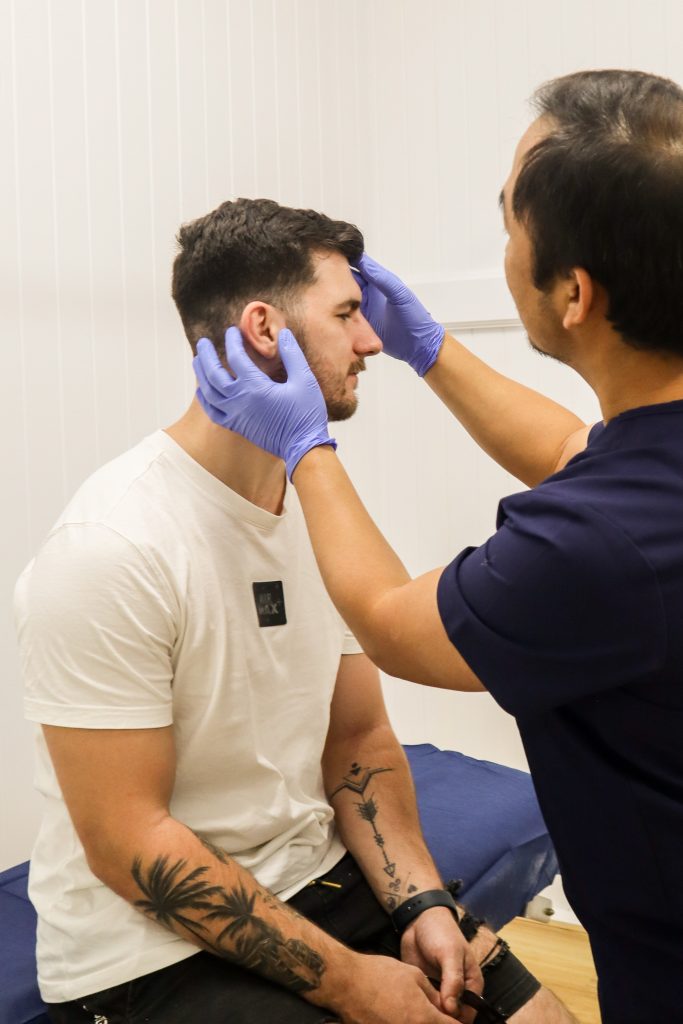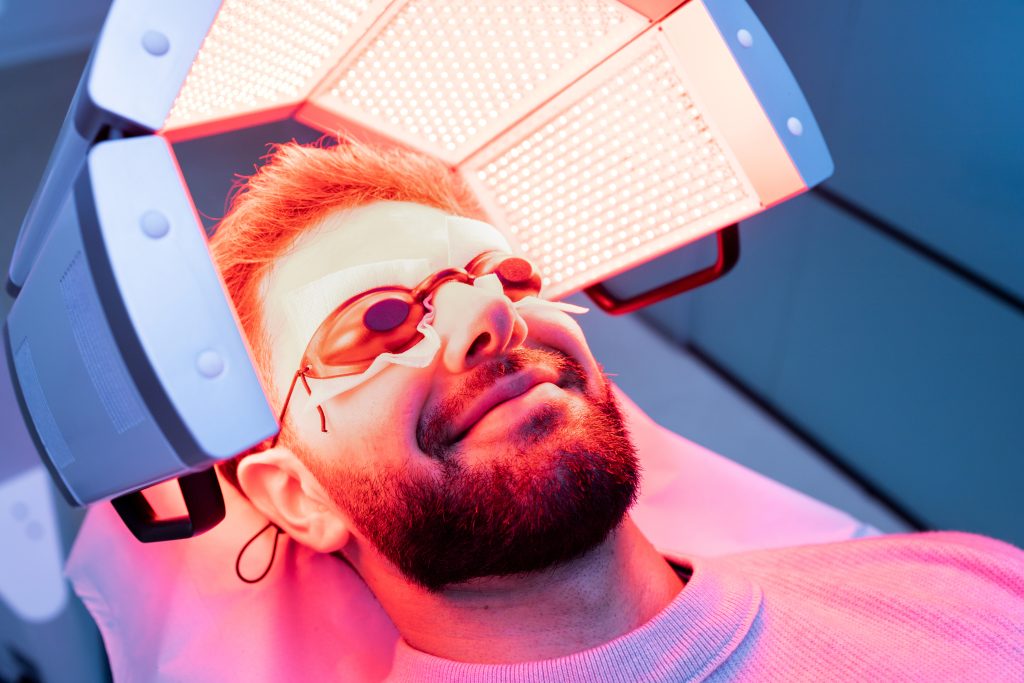
Photodynamic Therapy (PDT)
Restore and Protect Your Skin with Light-Activated Treatment At Skin C, we offer Photodynamic Therapy (PDT) — a non-invasive, highly effective treatment designed to target sun-damaged skin, precancerous spots, and early skin cancers safely and comfortably.
What Is Photodynamic Therapy (PDT)?
Photodynamic Therapy uses a special light-activated medicine and gentle light energy to selectively treat abnormal or sun-damaged skin cells.
It’s a trusted method for treating conditions like:
- Actinic Keratosis (precancerous sun spots)
- Early-stage skin cancers (such as superficial Basal Cell Carcinoma)
- Sun-damaged or aging skin
This targeted therapy helps clear damaged cells while preserving the healthy surrounding skin — with minimal downtime and outstanding cosmetic results.

Why Choose Photodynamic Therapy at Skin C?
Non-Invasive, No Downtime
Our outpatient treatment requires no surgery, allowing you to return to your normal routine right after your session.
Treats Sun Damage and Early Skin Cancers
PDT effectively targets sunspots, actinic keratosis, and superficial skin cancers with precision and minimal discomfort.
Cosmetic-Friendly Results
With little to no scarring, Photodynamic Therapy offers excellent cosmetic outcomes—ideal for visible or sensitive areas.
Expert-Led Care at Skin C
Our experienced team ensures safe, personalised treatment plans using the latest PDT techniques in a supportive, professional setting.
Your questions answered
FAQ
How does Photodynamic Therapy (PDT) work to treat sun-damaged skin?
PDT targets and destroys sun-damaged or abnormal skin cells using a light-sensitive cream and a special medical light. It treats the problem at the cellular level without the need for surgery, making it ideal for visible or sensitive areas like the face, scalp, or décolletage.
What types of skin conditions can PDT treat?
PDT is mainly used to treat sun-damaged skin, actinic keratoses (precancerous spots), and superficial basal cell carcinomas. It’s especially suitable for patients with multiple lesions or sensitive areas like the face and scalp.
What does the PDT procedure involve?
A photosensitising cream is applied to the affected area and left for a few hours. Then, a specialised light activates the cream, targeting abnormal cells. The procedure is typically done in a clinic and may take a few hours in total.
What should I expect after treatment?
It’s common to experience redness, swelling, or peeling similar to a sunburn for a few days. Treated areas usually heal within 1–2 weeks. Your doctor will give you aftercare instructions and sun protection advice.
Book Your Skin Assessment Today
Explore Photodynamic Therapy (PDT) as a treatment option for your skin condition. Book a consultation today.
